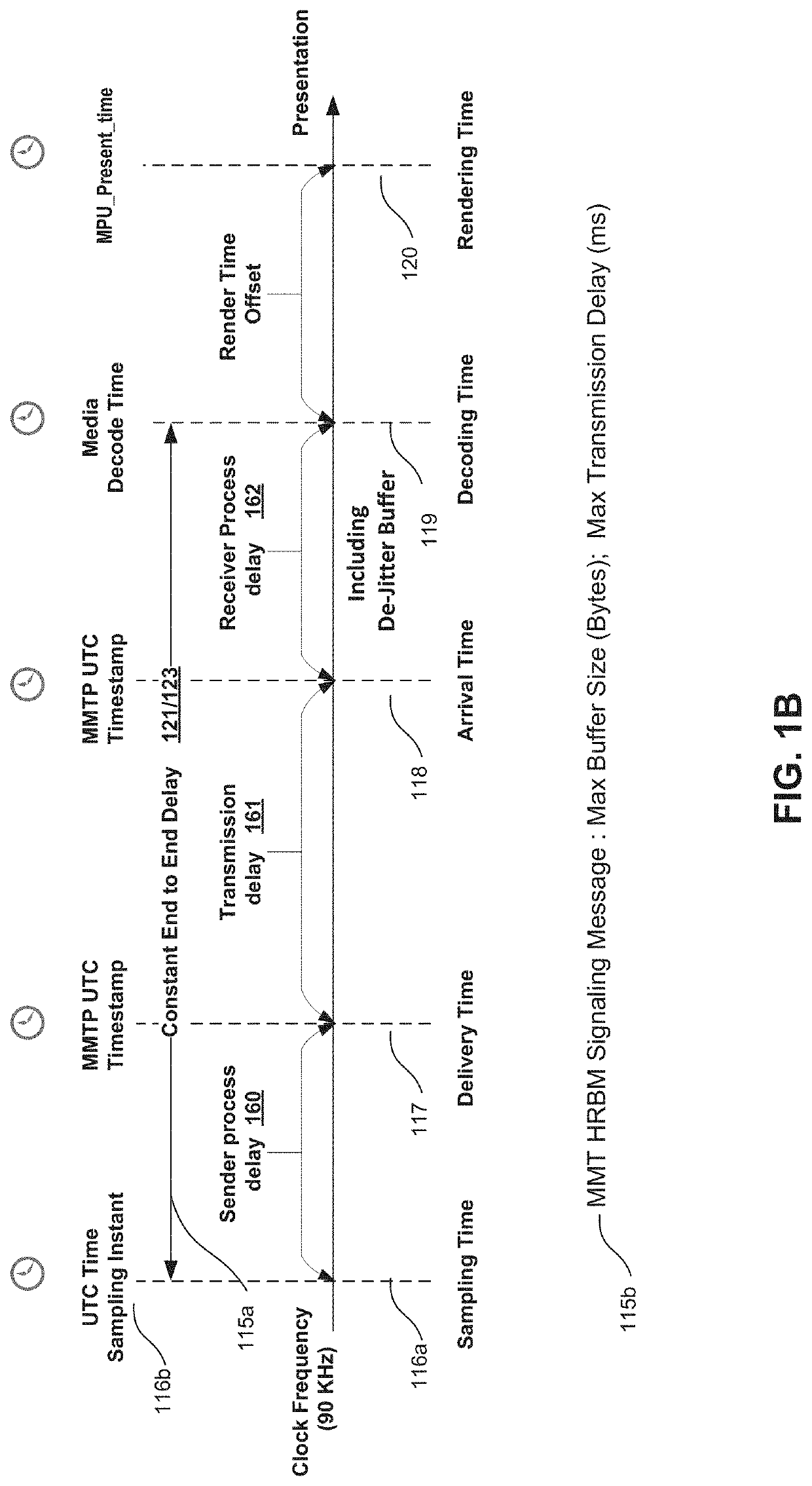Using Broadcast Physical Layer for One-Way Time Transfer of Universal Coordinated Time to Receivers
a broadcast physical layer and receiver technology, applied in the field of communication systems, can solve the problems of less robust signaling, increased delay, and ineffective use of atsc 3.0 one-way time transfer method in mobile environments, and achieve the effect of improving transmission accuracy
- Summary
- Abstract
- Description
- Claims
- Application Information
AI Technical Summary
Benefits of technology
Problems solved by technology
Method used
Image
Examples
Embodiment Construction
[0031]FIG. 1A illustrates a block diagram of a hybrid broadcast / broadband network 100, according to some embodiments. Network 100 illustrates an end to end IP content / data flow using, for example, the ISO / IEC 23008-1 MMT (MPEG Media Transport) standard and timing model to enable a heterogeneous network. It is noted that although FIG. 1A is discussed with respect to MMT standard for context, the embodiments of this disclosure are not limited to this standard.
[0032]According to some embodiments, and as illustrated in FIG. 1A, the MMT standard operates using a common UTC clock 101a at the broadcaster / content provider entity 103, a common UTC clock 101b at the MMT sending entity 105, and a common UTC clock 101c established on the receiver device 110 using the over the air (OTA) broadcast signal 113. According to some embodiments, one or more of the clocks 101a, 101b, and 101c can include a circuit (e.g., a clock generator) configured to generate a timing signal for use in synchronizing ...
PUM
 Login to View More
Login to View More Abstract
Description
Claims
Application Information
 Login to View More
Login to View More - R&D Engineer
- R&D Manager
- IP Professional
- Industry Leading Data Capabilities
- Powerful AI technology
- Patent DNA Extraction
Browse by: Latest US Patents, China's latest patents, Technical Efficacy Thesaurus, Application Domain, Technology Topic, Popular Technical Reports.
© 2024 PatSnap. All rights reserved.Legal|Privacy policy|Modern Slavery Act Transparency Statement|Sitemap|About US| Contact US: help@patsnap.com










